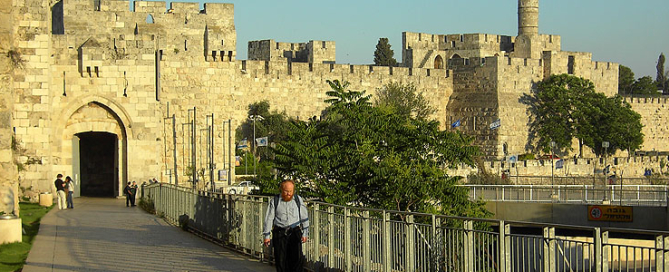The border
After my experience in nine Arab countries through the north of Africa and Middle East where I travelled for more than 16 months, my curiosity carried me to Israel. At the beginning I was afraid, because Israel always was synonymous of war, terrorist attacks and endless conflicts, but after travelling through the country for almost two months I realized that Israel is a country that deserves to be visited, to know its history and to understand the reason about a fight without end.
From Egypt, Clara and I entered to Israel and at once when crossing the frontier we should walked some meters under some small showers which sprinkled us. Will it have been to disinfect us of something? Or for controlling if we had residuals of gunpowder, or of drugs maybe? Really we didn’t understand it, but because of we didn’t want to enter with the left foot, we preferred to avoid any comment. Anyway, very meek, we had to submit to a strict control of our belongings; but we were aware that to enter to the country we had to have a lot of patience. At the beginning we had to put all our baggage into the scanners system, some of our bags more than once. Then the control officials, almost all of them young people, opened and checked the 14 bags that we have. They checked one by one, the laptop, the wheels of the bicycles, their frames, the tools and the spare parts; leaving everything as a true mess. They almost took one hour, and then we needed another one to put in order and to check our things. I believe that if we didn’t know about the procedure, we would have reacted.
Once ready we were delegated to other officials who asked us for the reasons of our visit, because our passport didn’t help us, due to they were full of Arab countries stamps. I remember when the official said to me that according to the security reasons of the country the interrogation could last up to 3 hours and that if we didn’t like we could return to Egypt. But it was ok, after another hour of questions in separate rooms we were “absolved” and finally Clara and I could enter to the country.
We had spent more than three hours, in which for some moments we really feel like in an espionage series of TV.
Jerusalem, Km 60.000
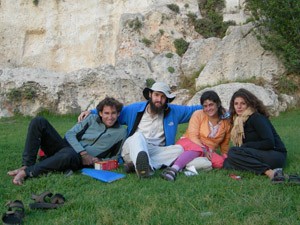
When we arrived to Jerusalem we stayed in the house where Maria lived, an Argentinean friend that we had met in the Wadi Rum desert, Jordan, some months ago. The place was an open house located in the Mount of Olives, in the Arab area. Ibrahim was the proprietary, a Muslim Arab who receives every traveller who arrives there. According to his tenants, Ibrahim is very well-known for his different peace programs, but for some moments he really seemed only a chatterer. In the house lived Hermes, a Mexican Jewish who studied the Torah (Jewish religious teachings) and a Belgian guy together to a French girl who worked in non government organizations. But every day new travellers arrived, from Europe, from USA and from Australia; all of them very strange people.
For us that house was a true chaos; but in the neighbourhood it was a nice example about coexistence and tolerance, in spite of the fact that many of their neighbours are not interested. I remember when walking to the house I met with that guy who kicked me the bags of the supermarket that I loaded;“It doesn’t matter, they are resentful” Hermes told me; “Of course, if the type was 30 kilos weightier than me”, I thought.
So I noticed once more how big is the dislike to the Western people; it would seem that to be a white man for this side of the world is synonymous of North American or English, for this I don’t like when the Arabs before to start a talk ask about the nationality.
Days later I knew that the Israeli buses don’t arrive to the Arab areas, and that only in some areas a service drove by them exists,… the reasons Hermes told me: “because they stone the buses”.
The Holy City, according to the Judaism, the Christianity and the Islam
Jerusalem is one of the oldest cities in the world, and it is considered a holy city for the three bigger monotheistic religions: the Judaism, the Christianity and the Islam.
According to the Old Testament, near 4000 years ago the patriarchs of the Jewish People, Abraham, Isaac and Jacob lived in the land of Israel which Jehovah had promised to them and their descendants forever. This promise was confirmed in the Sinai Mount and given by Jehovah to Joshua after Moses’ death, when the People of Israel returned to their land after having been liberated of the slavery and oppression in Egypt. Between the years 1002 B.C. and 970 B.C., the king David unified the Kingdoms of Israel and Judah, and he proclaimed Jerusalem as the capital of the Promised Land. Salomon, son of David, was the third and last king from all Israel, and who built the Temple of Jerusalem. He was also illustrious for his wisdom, his wealth and his power.
The temple of Jerusalem was destroyed by the Babylonians in the 586 B.C. but then it was reconstructed. In the year 70 A.C. the Romans destroyed Jerusalem and also its Second Temple, but today its western wall still exists. Called the Wall of the Laments it is also the last sign of the Second Temple, the most sacred place in the Judaism; and for this to visit it, was moving. The women attend to a side, and the men to the other one, although all of them are to the same compass, identified with their prayers, as who are regretted, as who beg, as desperate.
Most of the men who go to the western wall to pray are orthodox Jewish, they wear traditional black attires, hats, long beards and hairstyles with rollers.
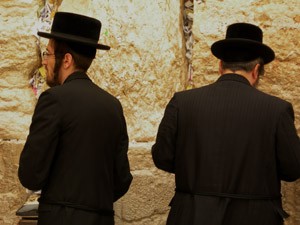
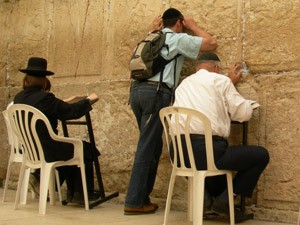
According to who explained to me in the Judaism different currents also exist, as the extreme orthodox, the conservative and the reformist; and among these currents several more subdivisions and/or sects. Some of these groups fulfil all the precepts surrendered by Jehovah to Moses 3,300 years ago, and they are based on the love to the neighbor, being emphasized in the tolerance and understanding; but some of these groups also criticize to the Zionism and the Israeli defensive, showing hostilely many times. For it although all the Jews should carry out the military service (men 3 years and women 2) most of the youths of the orthodox current don’t do it, alleging religious reasons. The orthodox parties’ legislators sustain that the youths of its community defend to the country “praying”. But the real extreme is Neturei Karta, a minority group of extreme orthodox Jewish who believe that the State of Israel should be dismantled peacefully and without delay; and then to ask forgiveness to the Palestinians and with humility authorization to live among them; because according to their ideology Palestine belongs to the Palestinians.
Meantime the reformist, progressive or liberal Judaism defends the individual autonomy about to the interpretation of the religious precepts. For them the homosexuality is so acceptable that they have rabbis gay; while for the orthodox the homosexuality is the sin and the biggest abomination that it should be punished with the death. The reformist Judaism rejects the sexual division; and men and women pray in the reformed synagogues in a combined way, defending the rights of equality between the man and the woman. For the orthodox, the woman has to serve her husband. According to the Jewish laws to carry out a rite are needed minimum 10 Jews. The orthodox believes that they should be 10 men, for the reformist they can be men or women.
During our stay in Jerusalem we also walked the Way of the Cross, the most sacred route in the Christendom; the road walked by Jesus from the moment in that he was captured until his crucifixion and sepulchre. The Way of the Cross has 14 steps or stations, nine in the narrow streets of the old city and five inside the church of the Sacred Sepulchre. All are marked by chapels or churches to meditate and to pray. We also visited the Mount of Olives where according to the Bible, Jesus frequently carried out his prayers, and even where he was the night that he was arrested. I found difficult to believe that in the Basilica of the Agony still exist olive trees that attested that night.
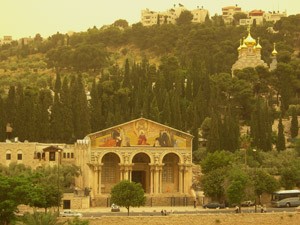
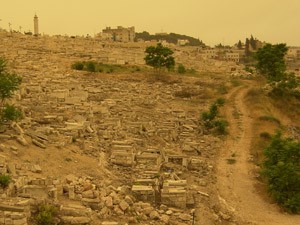
But the Mount of Olives is also for the Jews, according to their prophet Zachariah, a sacred place, from which God will begin to liberate to the dead at the end of the times, for this from the biblical times until today the Mount has been used as cemetery for the Jews of Jerusalem. Today there are 150.000 tombs approximately because when Jerusalem was occupied after the Arabic-Israeli war between 1948 and 1967 the Jordanians used the tombs of the cemetery to build highways and latrines for the army, including gravestone of more than a thousand years of antiquity. After the Six Days war, the Israelis repatriated as many gravestone as it was them possible.
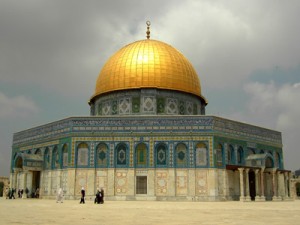
Meanwhile for the Muslims, Jerusalem is not only a sanctuary of Christian and Jews; but the Holy City more worshipped of the Islam, after The Mecca and Medina, because according to the Islamic tradition, Mohammed ascended to the skies to meet Allah, accompanied by the angel Gabriel. In fact in that place the Muslim built an imposing monument to Mohammed’s ascension: The Dome of the Rock, for them the symbol of Jerusalem.
But the Jews also affirm that that place was where Abraham was about to sacrifice his son Isaac for order of Jehovah, and where is the heart of the temple of Jerusalem.
It is said that the conflict in the Middle East is between siblings, because it is believed that we all are children of Abraham; the Jews are the children of his son Isaac, and the Arab, of his other son Ishmael. According to the Talmud (the oral tradition) Abraham’s children fought during many years but when Abraham was buried in Hebron, Isaac and Ishmael reconciled in his tomb. Let us hope it also arrives the day in which Jews and Arabs reconcile.
The last days in Jerusalem
During the last days in Jerusalem, we visited Bethlehem, but for this we had to cross the strict control of the Israeli West bank Barrier or “The racial segregation wall” as it is called in the Palestinian Territories: According to the people who explained us the construction of the barrier began in 2002 by the Israeli Government with the purpose of protecting the civil Israelis against the Palestinian terrorism. Its final longitude, (it didn’t still finish), is considered in more than 700 km, of which 12% adopt the form of a wall of concrete of until seven meters high; and the rest a system of fence and wired with towers for the military control. But for the Palestinian, the barrier hinders the transfer among populations and it has caused the loss of lands, the increase of its difficulty to consent to the medical care in Israel, the increase of the controls of the Israeli army and effects in the demography and Palestinian economy. For this the U.N., from several dependent organisms, has criticized in multiple occasions the construction of such measure. Resolutions have also been approved in the Commission of Human Rights in which urged to Israel to the dismantlement of the Barrier. But it doesn’t still happen.
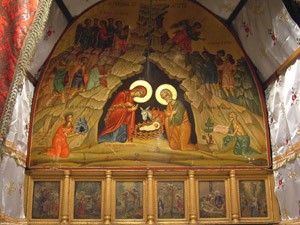
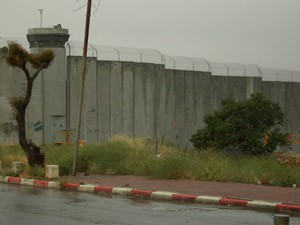
Finally we also visited the Yad Vashem, the museum of the Holocaust in Jerusalem that remembers to the six million men, women and Jewish children murdered by the Nazi and their collaborators between 1933 and 1945. The museum, the biggest and extensive in the world about the Holocaust, exposes the history through pictures, objects, documents and audiovisual resources; and it has, as one of the fundamental objectives, the realization of courses that annually arrive to more of 100.000 students, 50.000 soldiers and educators’ thousands. A real dose for don’t forget the past and to face the present.


